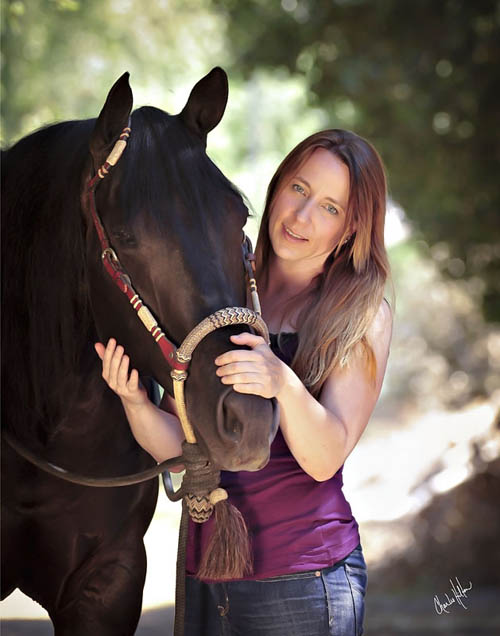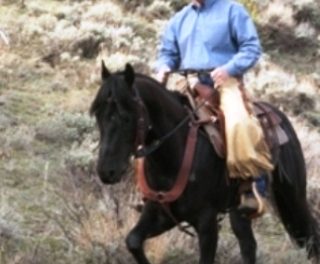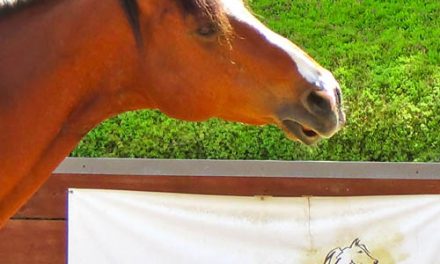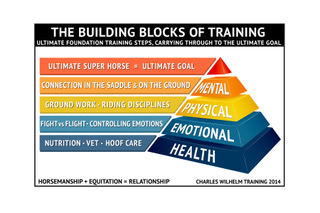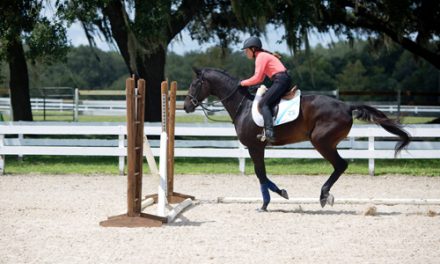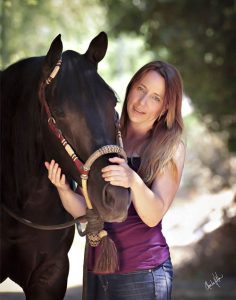
Lacy and Toby
I believe horsemanship is being knowledgeable of and responsible for every aspect of the horse. We need to make judgments about our horses based on what works for the horse. Proper nutrition for the horse is important for both the health and behavior of a horse.
Good horsemanship requires a knowledge of nutrition. Over the years, a lot of nutritional supplements have come out on the market. Since the market is largely female and horse moms traditionally want their horses well nourished, many horses receive supplements. What I see at times is several hundred dollars a month being spent on supplements, many of which contain the same nutrients. We need to be careful of what we feed our horse because a horse can get too much of something, iron or zinc for example, and that can have a negative effect.
In general, most horses do not need supplements. A horse in good pasture, supplemented with good hay, will probably not need a supplement. If the coat is dry, brittle and dingy, the horse is probably not getting proper nourishment and a supplement will help. The supplement should be specific to the need of the horse. It may be given to add weight {high fat content}, to brighten the coat or to support joint health or if a horse has bad feet, a supplement with biotin will help.
We do not just supplement with grain but we select a product that is specific to the needs of the horse. We give a little and make sure that it is tolerated. We can also add a little grain or sweet feed (no more than one pound) to a supplement or to medication to mask the flavor and make it taste better.
A little supplement may be needed for a horse in training or one being worked consistently that is not holding weight, the coat is not looking good or the horse has a low energy level. The amount of grain to feed must be based on the level of activity. How you are using your horse, how often and how hard you ride, must be a part of the nutrition equation. If the grain is not burned off, the horse may become hard to handle or gain too much weight. We train a horse to be fit as well as to be obedient. When supplementing with grain, we need to be moderate. We do not give the horse five pounds. I suggest starting light and increasing the amount as needed. We give a certain number of pounds and increase as needed. Experiment to see what works well for your horse and give a consistent amount.
We also feed hay by weight and see what the horse cleans up. If the horse is getting too much hay, it will not be cleaned up. We need to feed the proper amount and not indiscriminately toss in a flake or flake and a half. Good horsemanship is paying attention to how much your horse is eating and how weight is being maintained. If the horse is gaining unwanted weight, the amount of food needs to be reduced. If a horse is on stall rest due to an injury, we need to consider this lack of activity in the amount we feed.
Horses need roughage for proper digestion. Good quality hay is important. Also, eating hay will encourage a horse to drink. Most people feed their horses alfalfa. It is always easy to obtain and it is a high protein. It is a very hot feed. Too much alfalfa can cause behavioral problems just like letting a child fill up on candy. Exceptions exist and some horse can tolerate pure alfalfa without bouncing off the walls. However, a diet of pure alfalfa can also generate calcium stones in the stomach. Stones can build to the size of baseballs or small melons. Because of their metabolism, Arabs are particularly prone to the development of stones. Sweet feed (ground alfalfa, corn, molasses) is basically just candy or rocket fuel for a horse. It is good to keep molasses/sweet feed around in case you need to give medicine and disguise the taste. Give a pound and that should not affect behavior.
We have to be savvy about what we feed our horses. A good quality grass hay is good for the digestive system. Wheat, oat and rye hay are part of the grass family. The problem with feeding only grass hay is that you normally have to feed twice as much to maintain the horse’s weight. If the horse is not a good eater, the grass hay won’t be cleaned up and the horse will lose weight. Unless the horse eats a lot of it, grass hay does not contain enough nutrition to maintain or put on weight. Also, oat hay could have larger/thicker stems and is not as tasty. Red oat hay is sweeter and fine stemmed. I like wheat or forage hay that has wheat, rye and oat in it. The horses like it better and clean it up.
Quality hay, grains and supplements are important. Finding quality hay can be a problem. The hay has to be good enough that the horses will clean it up and get the nutrients from it. Good hay has a pleasant fresh smell. Wheat hay has a sweeter smell than oat hay. Most horses will eat wheat hay better but will also eat a good, fine stemmed oat with a nice sweet smell. A mixture of alfalfa and a grass hay may work very well but you need to find out what works for your horse. In cold weather, you may want to feed the hotter feeds at night to generate warmth.
Some horses are easy keepers and others don’t eat well or they are fussy eaters. Any time you introduce a new type of hay, your horse may reject it. You may try feeding a little short the first feeding. In other words if the horse usually gets ten pounds, you may want to feed seven or eight. You should know after the first feeding if the horse likes the hay. You have a red flag if only 20 or 30 percent has been eaten or after three days the horse has not adjusted. I have bought fine stemmed hay that looked and smelled good but the horses wouldn’t eat it. I have had hay that did not look good but had a pleasant sweet smell that the horses ate right up. Sometimes you just have to try it. When you buy your own hay, you need to look at what you receive. If the hay isn’t satisfactory, you need to be willing to call up and tell the seller that the hay you received was not acceptable and must be replaced.
Know that your feed is going to cost more in the winter. If you have your own place to keep your hay dry, you probably want to get your supply in before winter. The first cut of alfalfa is very leafy with a high protein content. When I buy alfalfa, I prefer a third or fourth cutting and the more stems the better. It still has a lot of protein but it is not as hot. We often feed cubes that are a mixture of 40 percent alfalfa and 60 percent oat hay. That percentage of protein keeps weight on the horses without getting them hyped up.

